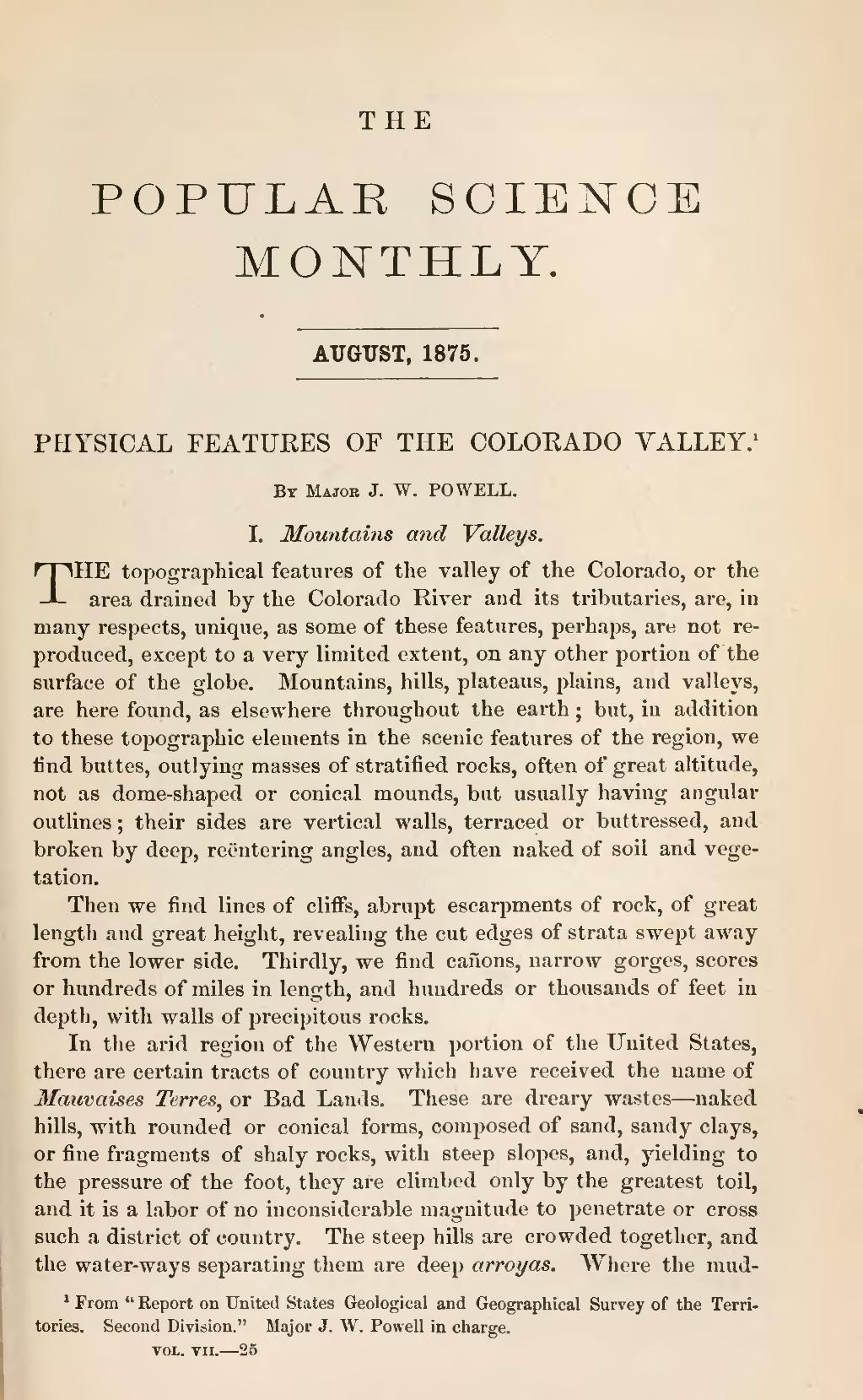THE
POPULAR SCIENCE
MONTHLY.
AUGUST, 1875.
| PHYSICAL FEATURES OF THE COLORADO VALLEY.[1] |
By Major J. W. POWELL.
I. Mountains and Valleys.
THE topographical features of the valley of the Colorado, or the area drained by the Colorado River and its tributaries, are, in many respects, unique, as some of these features, perhaps, are not re-produced, except to a very limited extent, on any other portion of the surface of the globe. Mountains, hills, plateaus, plains, and valleys, are here found, as elsewhere throughout the earth; but, in addition to these topographic elements in the scenic features of the region, we find buttes, outlying masses of stratified rocks, often of great altitude, not as dome-shaped or conical mounds, but usually having angular outlines; their sides are vertical walls, terraced or buttressed, and broken by deep, reentering angles, and often naked of soil and vegetation.
Then we find lines of cliffs, abrupt escarpments of rock, of great length and great height, revealing the cut edges of strata swept away from the lower side. Thirdly, we find cañons, narrow gorges, scores or hundreds of miles in length, and hundreds or thousands of feet in depth, with walls of precipitous rocks.
In the arid region of the Western portion of the United States, there are certain tracts of country which have received the name of Mauvaises Terres, or Bad Lands. These are dreary wastes—naked hills, with rounded or conical forms, composed of sand, sandy clays, or fine fragments of shaly rocks, with steep slopes, and, yielding to the pressure of the foot, they are climbed only by the greatest toil, and it is a labor of no inconsiderable magnitude to penetrate or cross such a district of country. The steep hills are crowded together, and the water-ways separating them are deep arroyas. Where the mud--
- ↑ From "Report on United States Geological and Geographical Survey of the Territories. Second Division." Major J. W. Powell in charge.

